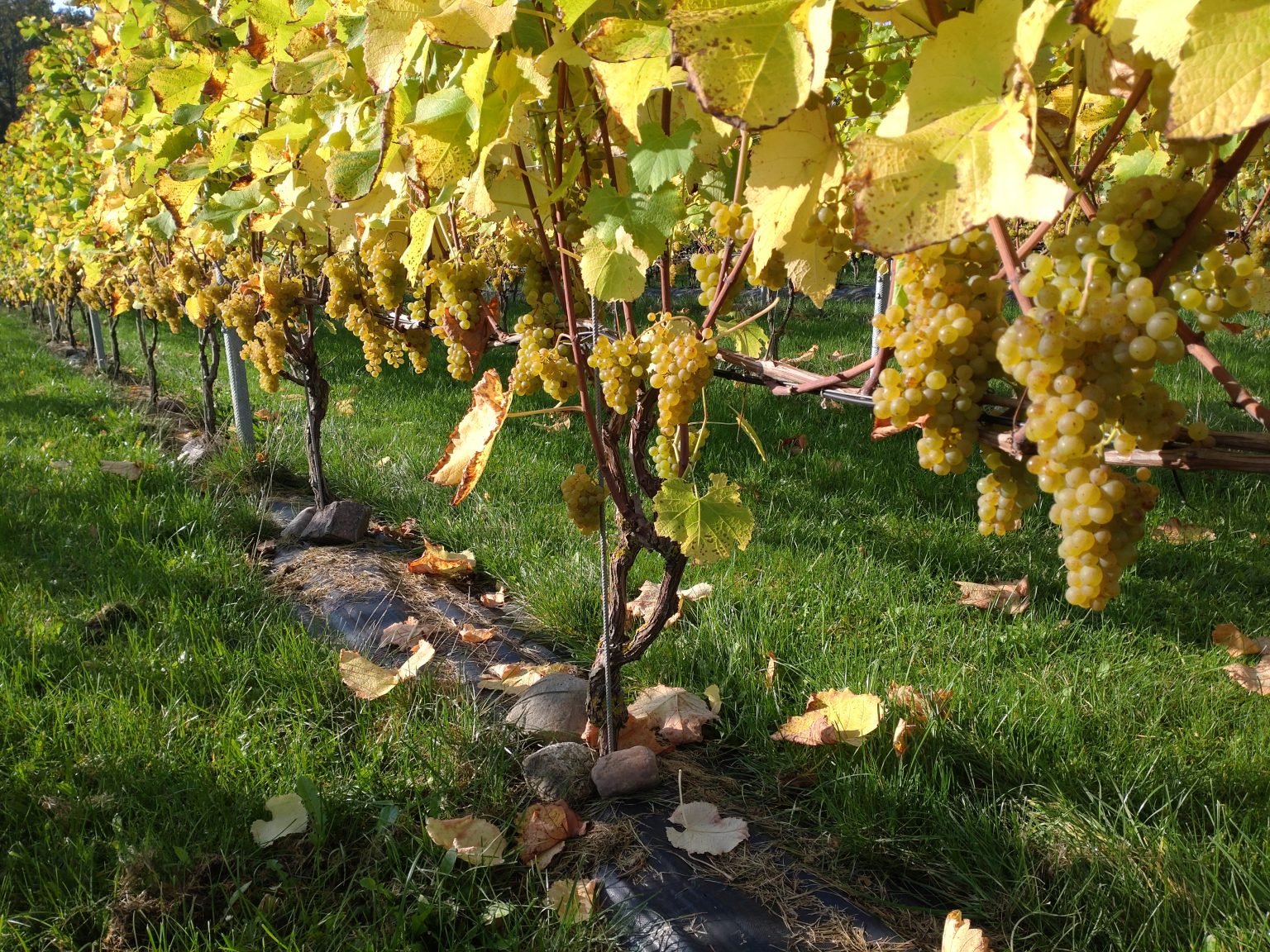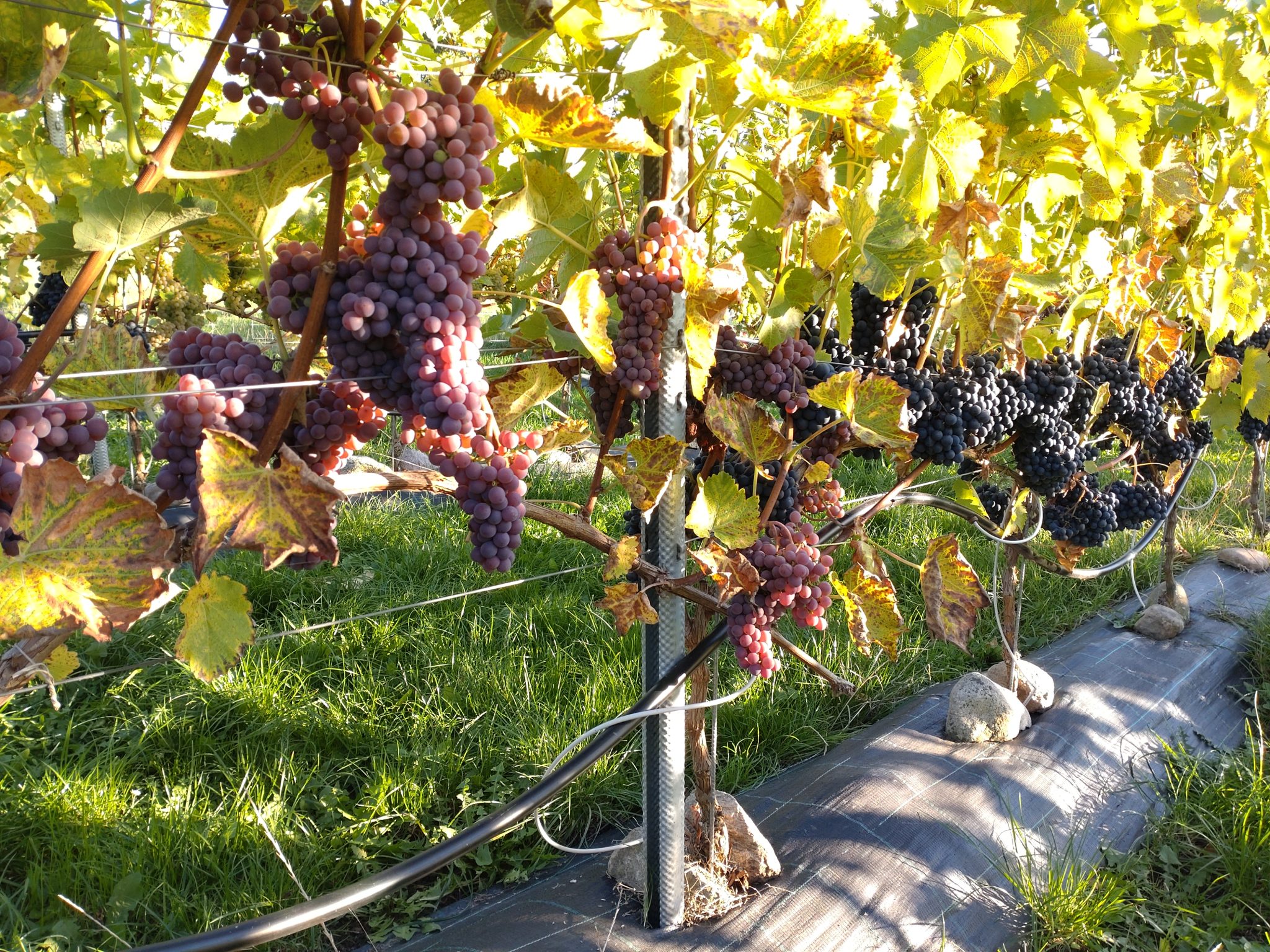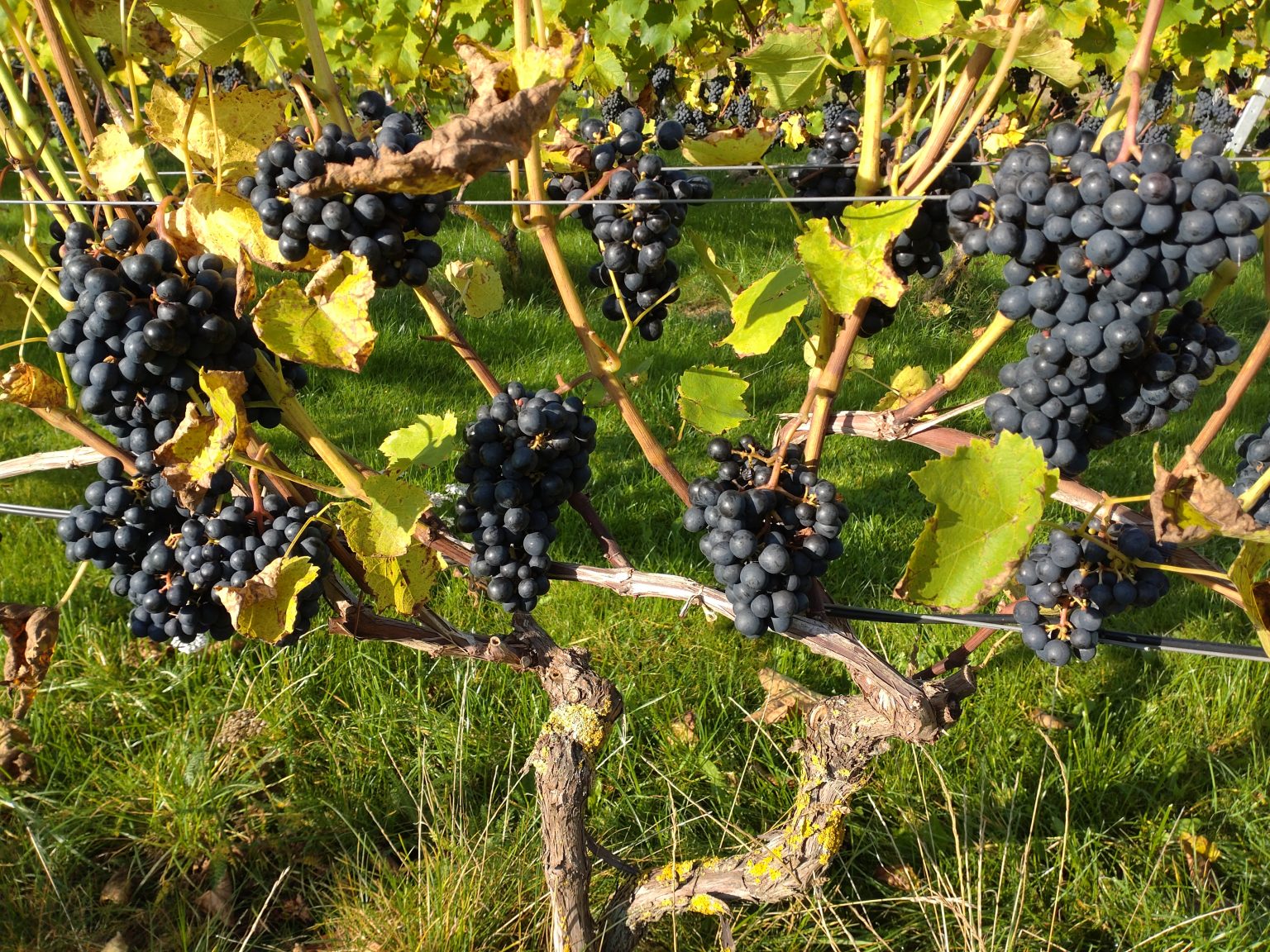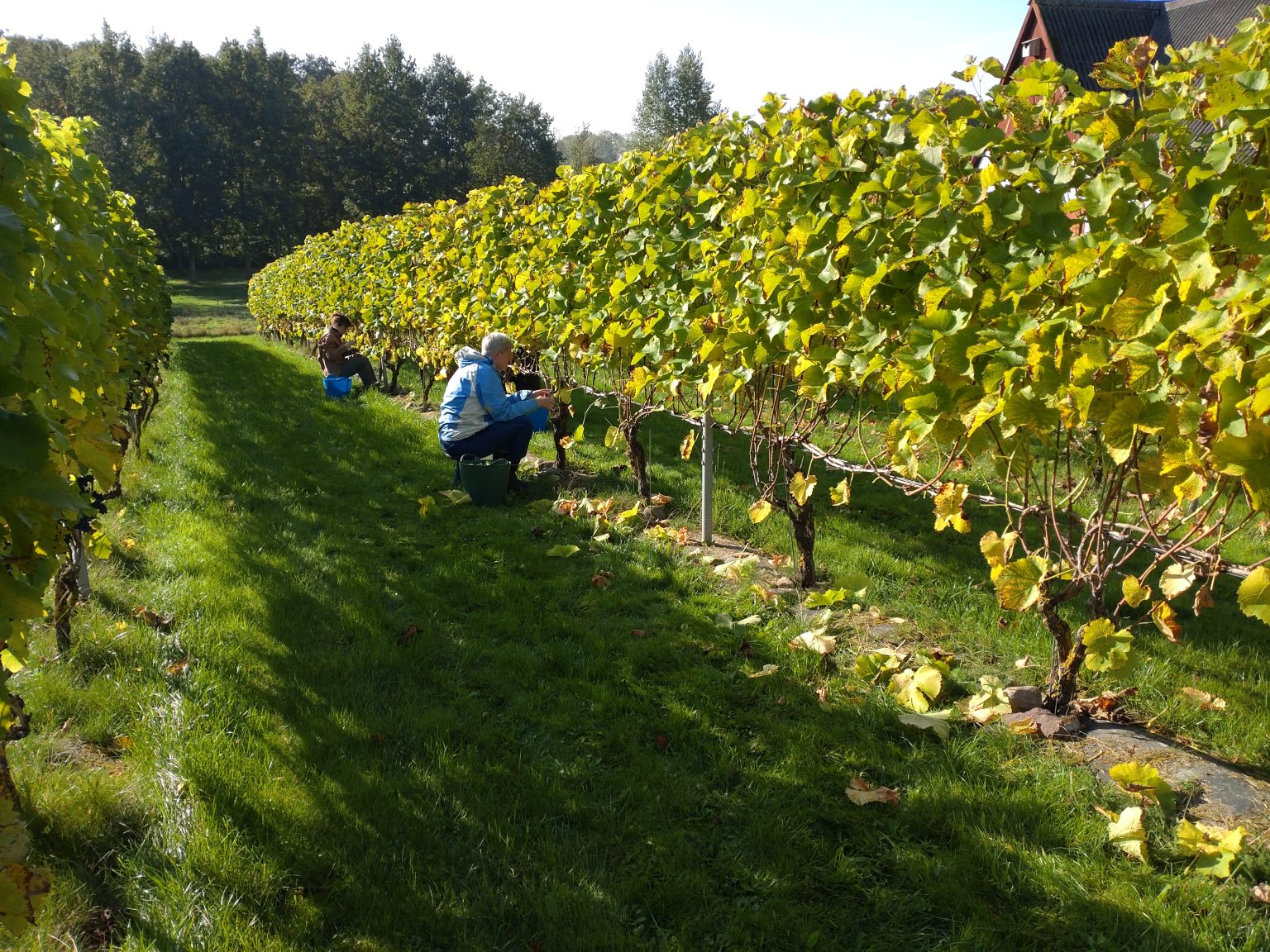Vrangbækgård Wine
Danish wine. Is it even realistic? And can it be done at such a high level that it is even interesting? Yes, the most important starting point is that you must be able to grow some healthy and ripe grapes. That's why you have to choose the right grape varieties, care for them carefully - and finally keep things under control in the winery.
"It is difficult to make good wine from bad grapes, but it is easy to make bad wine from good grapes."
In 2011, the first two rows of vines were planted on a south-facing slope close to the farm as a family hobby project. The following year a few more rows were added, and gradually the field has thus grown until it is now so large that the yield exceeds what we ourselves can manage to drink. Therefore, in 2021 we took the leap from hobby growers to commercial growers, so that we can now also sell the wine we produce.
Along the way, some grape varieties have been uprooted and replaced by others, so that the field now contains the varieties we have the most confidence in.

The green grapes
– for our white table wines and sparkling wines
We have most of the green grapes, and the most important variety is 'Solaris', which in aroma and flavor profile is reminiscent of 'Souvignon blanc', but which – with safe ripening and high concentrations of both sugar and a refreshing acid – gives powerful, full aromatic wines.
In addition, we grow 'Johanitter', which under Danish conditions is a very late maturing variety, which is particularly suitable for sparkling wines. The same applies to 'Villaris', which, however, is also included in the table wine blend with 'Solaris' in the good years.
Finally, 'Muscaris' is an aromatic variety of the muscat type, which contributes aromatic complexity to both white and rosé wines. Most recently, we have planted 'Souvignier gris' and 'Hibernal' on an experimental basis.
'Souvignier Gris' ripens late in Denmark and is therefore primarily used for sparkling wine. The bunches are plump and beautifully red. The profile is reminiscent of 'Pinot Gris'.
'Hibernal' is a newer variety developed at the University of Geisenheim. It ripens late in Denmark, but still achieves an aromatic profile. We had our first harvest of the variety in 2022, and it will be included in the sparkling wines of the new vintage.
From all these grape varieties, approx. equal amount of table wine and sparkling wine.

The blue grapes
– for the red wines from sparkling rosé to fortified wine.
The blue grapes are dominated in terms of quantity by 'Bolero', which gives a large yield suitable for especially sparkling rose wines. With appropriate yield control and split harvesting, 'Bolero' can also develop a late-harvested proportion of more mature grapes. These can be included in blends for both rosé and red wines. Here it is blended with the variety 'Triomphe d'Alsace'.
'Triomphe d'Alsace' is an approx. 100-year-old French/German hybrid with a strong resistance to diseases. It ripens well in Denmark. Clusters and berries are relatively small, resulting in red wines with good complexity. This variety is the main variety in our red wines, which, however, are only produced in the best years, and in addition it is the basis for our fortified wine.

In the years when no red wine is produced, all blue grapes are included in the rosé wines, which thereby achieve particularly good quality in these otherwise less good years. Part of the rosé wine is also cask-fermented, which gives it even more complexity.
Finally, we also produce a fortified wine. When the grapes have fermented for approx. After 3 days, the partially fermented wine is raised, which is immediately fortified with alcohol to approx. 20% vol., whereby the fermentation is stopped and the rest of the fruit sugar in the wine is therefore preserved.
After fermentation, the fortified wine is poured into a custom-made converted port wine cask of 67 litres. Maturation takes place faster in small casks, so after a few years a development of the wine corresponding to 8-10 years of aging in normal large port wine casks is achieved.
The location of the vineyard

Our vineyard is located on a south-facing slope close to the coast at Lundeborg on Funen, and with the help of careful pruning and very high foliage walls with large row spacing (to avoid shade), maximum benefit from the sun's rays is achieved.
This means that the field is able to deliver very nice and ripe grapes almost every year. Therefore, we do not need to manipulate the wine in the winery by adding extra sugar or reducing acid. This results in naturally balanced and tasty wines.
Organic cultivation of robust varieties
We grow a range of robust grape varieties, which, with a short development time from budding to ripening and harvest, are suitable for cultivation in the cool Danish climate. They are the result of persistent cross-breeding work by German breeders for more than 100 years. (PIWI = pilzwiederwiderstandsfähige rope variety.)
The list of grapes that can be ripened with more or less success in Denmark, we are now "taking a step up" with the development of a number of new grape varieties. See page "Development of new varieties for cold climates'.
The European grape Vitis vinifera has been crossed with wild Vitis species from North America in particular, whereby they have achieved great robustness (resistance to diseases). The complex genetic background makes them particularly suitable for organic cultivation with minimal use of pesticides.

2-3 preventive sprayings with spraying sulfur and baking soda (baking soda) are carried out per season. In dry summers, as in the past few years, spraying can be dispensed with, but should still be carried out in order not to strain the plants' natural resistance.
The field is fertilized with organic fertilizer in dried pellet form.
No weed killers are used, as the plants are planted in a small mound of earth covered with weed cloth. The planting hole is supplemented with cocus mats and hand weeding.
The farm's chickens and ducks contribute to keeping the green areas between the rows of vines, while 2 Swedish farm dogs and a pair of falcons keep marsh pigs away.
